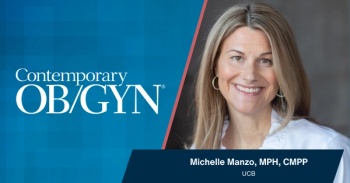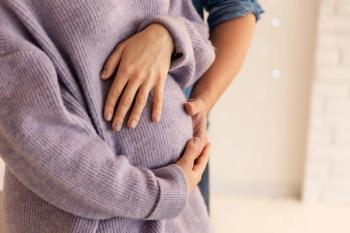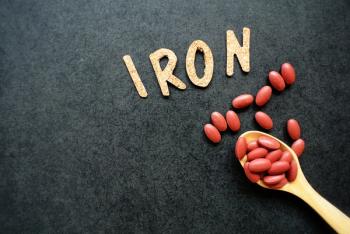Takeaways
- Planned elective oocyte cryopreservation increased nearly fourfold from 2014 to 2021, with a declining mean age at freezing.
- Only 5.7% of patients returned to use cryopreserved oocytes within 5–7 years, most commonly among those aged 38–42 years.
- Among patients who thawed eggs, live birth outcomes were comparable to national IVF rates, underscoring the procedure’s efficacy when used.
The popularity of elective fertility preservation has surged across the US, yet only a small proportion of patients return to use their frozen eggs, according to new data from University of California, Los Angeles (UCLA) Health published in the American Journal of Obstetrics and Gynecology.1,2
Researchers found that the number of planned elective oocyte cryopreservation cycles nearly quadrupled between 2014 and 2021, increasing from 4153 to 16,436. However, just 5.7% of women who froze their eggs between 2014 and 2016 returned to use them within a 5- to 7-year follow-up period.
“This is the largest US study to date on elective fertility preservation, revealing insights into the clear shift in reproductive behavior as more women delay childbearing to pursue education, careers, and personal goals,” said Lindsay Kroener, MD, associate clinical professor in reproductive endocrinology and infertility at the David Geffen School of Medicine at UCLA and senior author of the study. “Egg freezing offers a powerful form of reproductive autonomy, and thanks to major advances in technology, the chances of success are better than ever.”
Younger patients freezing eggs, older patients returning for use
Using data from the Society for Assisted Reproductive Technology Clinic Outcome Reporting System (SART-CORS), investigators analyzed national trends in elective fertility preservation cycles from 2014 to 2021. The average age at egg freezing decreased from 36.0 years in 2014 to 34.9 years in 2021.
Despite younger women increasingly undergoing the procedure, utilization of cryopreserved oocytes remained low. Women aged 38 to 42 years were the most likely to return to use their eggs—7.9% among those aged 38 to 40 years and 8.0% among those aged 41 to 42 years.
“What researchers didn’t expect was the significantly low rate of egg utilization,” Kroener said. “This finding may be limited by the relatively short follow-up period, particularly for younger patients. It will be important to see how return rates for thawing evolve with a longer follow-up period.”
Live birth outcomes comparable to national in vitro fertilization rates
Among patients who returned for oocyte warming, 78.5% obtained at least one usable embryo, while 21.5% had no usable embryos. Of those with usable embryos, 64.2% underwent a fresh embryo transfer and 46.1% had their embryos cryopreserved. The cumulative live birth rate among all patients who returned for oocyte warming was 28.9%, decreasing with the increasing age at cryopreservation.
Study coauthor Mabel Lee, MD, a reproductive endocrinology and infertility fellow at UCLA Health, noted that “this is reassuring that planned oocyte preservation can provide a good option for patients who are looking for more family planning flexibility.”
When all patients who underwent planned oocyte cryopreservation were considered, regardless of whether they returned for thawing, the overall live birth rate was 1.6%.
Clinical implications for reproductive counseling
Authors emphasized that while return rates remain low, outcomes among those who do return are consistent with age-related fertility patterns seen in in vitro fertilization using fresh oocytes. The study’s findings underscore the need for continued long-term monitoring to assess whether younger cohorts eventually use their preserved oocytes as they reach later reproductive years.
The analysis also highlights persistent demographic disparities. More than 60% of patients undergoing elective oocyte cryopreservation were White, with minimal change in racial or regional distribution across the study period.
According to the authors, these data can help reproductive endocrinologists counsel patients on realistic expectations for elective fertility preservation. “Planned oocyte cryopreservation has increased exponentially,” the study concluded, “yet the return rate for oocyte utilization remains low. For patients who do return to use their cryopreserved oocytes, outcomes are comparable to the general population using assisted reproductive technologies and demonstrate the same age-dependent inverse correlation with success.”
References
- Prisco A. UCLA study finds more women freezing eggs, fewer returning to use them. UCLA. September 26, 2025. Accessed November 3, 2025. https://www.uclahealth.org/news/release/ucla-study-finds-more-women-freezing-eggs-fewer-returning?fbclid=IwY2xjawN15b1leHRuA2FlbQIxMQABHqNvtNyURdI7Z2D09YDGefHVsRntE5y3wC38WFLtQikSccfB_5SyYceuzEfW_aem_S_n782iFzt1mtfphi1G8sg
- Lee MB, Mehrnaz Siavoshi, Kwan L, Kroener L. Elective fertility preservation: a SART-CORS study on trends in oocyte cryopreservation (OC) and oocyte utilization over a 5-7-year follow up period. American Journal of Obstetrics and Gynecology. Published online August 1, 2025. doi:10.1016/j.ajog.2025.08.032











